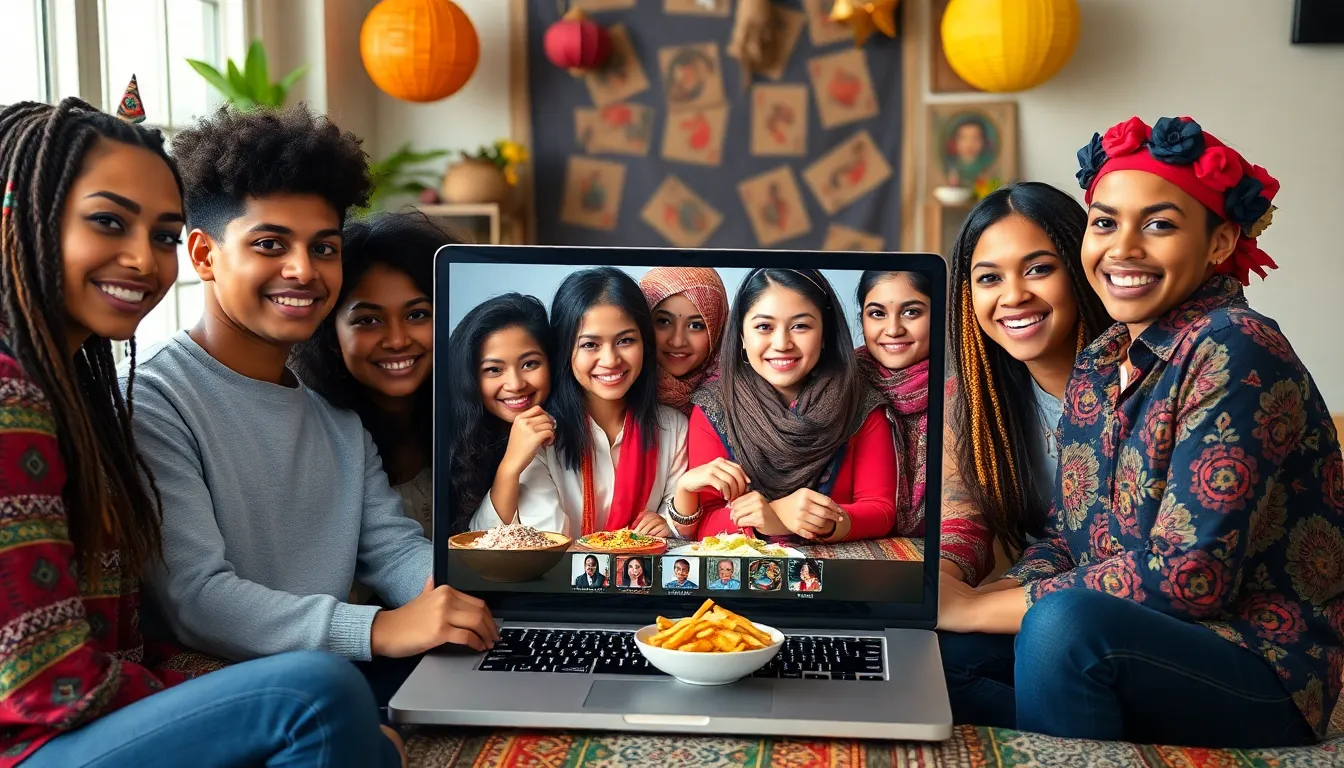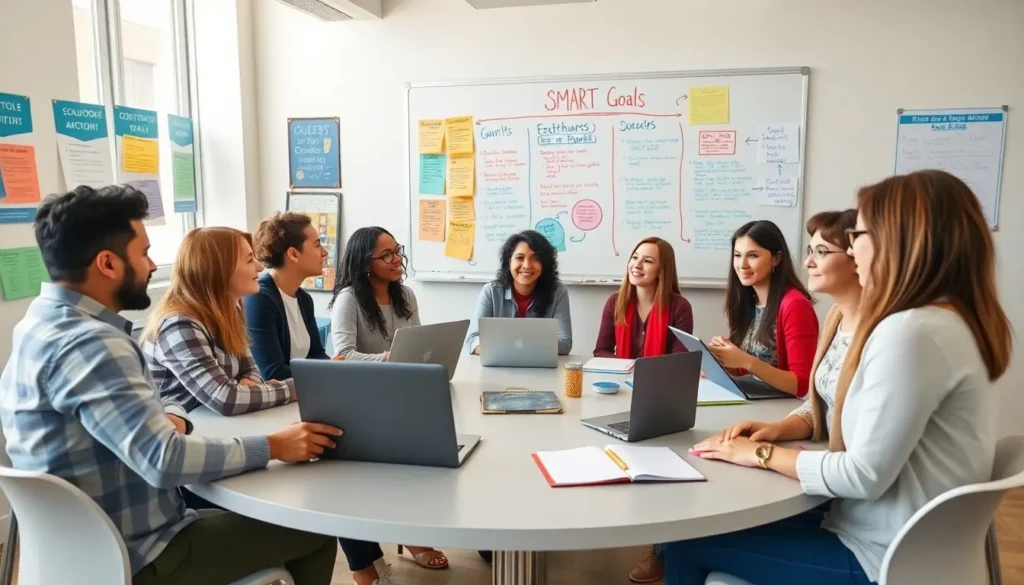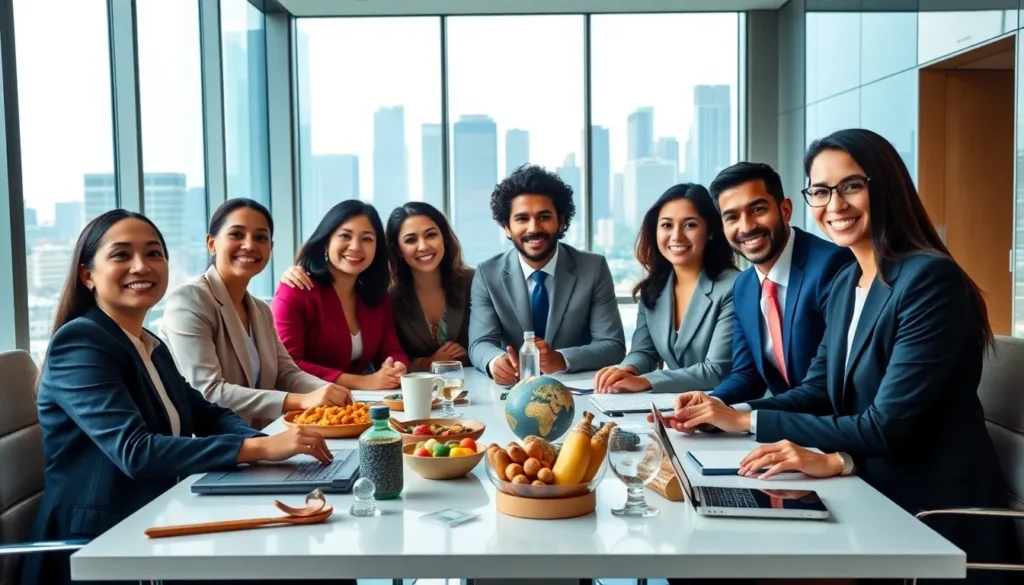In an increasingly interconnected world, global culture shapes the way people communicate, create, and connect. It’s a vibrant tapestry woven from diverse traditions, ideas, and practices that transcend borders. From music and art to cuisine and fashion, the influences of global culture are evident in everyday life, enriching experiences and fostering understanding among different communities.
As technology bridges distances, cultural exchange occurs at an unprecedented pace. This phenomenon not only celebrates diversity but also raises questions about identity and authenticity. How do local customs adapt and thrive in a globalized environment? Exploring these dynamics reveals the intricate relationship between globalization and cultural evolution, highlighting both the challenges and opportunities that arise in this ever-changing landscape.
Table of Contents
ToggleUnderstanding Global Culture
Global culture refers to the shared experiences, values, and practices that transcend national boundaries, shaping contemporary society. It plays a crucial role in communication, creativity, and collaboration among diverse populations.
Definition of Global Culture
Global culture encompasses the collective customs, beliefs, and practices influenced by globalization. It includes elements such as language, music, art, food, and fashion that circulate worldwide, promoting shared knowledge and interconnectivity. Scholars often define it as the blend of local cultures with international influences, resulting in unique, hybrid expressions.
Key Characteristics of Global Culture
- Interconnectedness: Global culture exhibits a high degree of interconnectedness, allowing individuals from different regions to engage and share experiences seamlessly.
- Diversity: Global culture thrives on diversity, embracing various cultural backgrounds and facilitating interactions that enrich mutual understanding.
- Adaptability: Global culture demonstrates adaptability, as local traditions evolve by incorporating global influences while maintaining core aspects.
- Accessibility: Global culture benefits from increased accessibility through technology, enabling rapid dissemination of cultural products worldwide.
- Innovation: Global culture fosters innovation by combining ideas and approaches from different cultures, often resulting in new artistic and creative expressions.
- Impact of Technology: Global culture is significantly influenced by technology, creating platforms for cultural exchange and dialogue that transcend geographical constraints.
Influence of Technology on Global Culture

Technology significantly influences global culture, reshaping interactions, creativity, and expressions across diverse communities. This section explores the pivotal roles social media and digital communication play in cultural exchange.
Social Media’s Role
Social media platforms serve as essential tools for cultural exchange. They enable individuals to share music, art, traditions, and cuisine with a global audience. Platforms like Instagram, Twitter, and TikTok allow users to engage in real-time conversations about cultural practices. They contribute to increased visibility for local customs, helping to preserve cultural heritage while encouraging dialogues that span borders. For instance, trends that originate in one region can quickly gain traction worldwide, influencing fashion, language, and lifestyle choices across cultures.
Digital Communication and Cultural Exchange
Digital communication enhances cultural exchange by breaking down geographical barriers. Technologies like video calls and messaging apps foster deep connections among people from different backgrounds. This facilitates learning about various cultural norms and practices, fostering greater empathy and understanding. Online communities enable the sharing of ideas, leading to collaborative projects that blend diverse cultural elements. Furthermore, online educational platforms allow access to global perspectives, enhancing cultural awareness and appreciation, which drives the evolution of global culture.
Overall, the integration of technology into cultural practices strengthens connections and generates a dynamic interplay of influences that enrich global culture.
Globalization and Cultural Homogenization
Globalization fosters cultural exchange, creating a landscape where diverse practices intertwine. This blending results in both positive contributions and challenges to local cultures.
Positive Aspects of Cultural Exchange
- Enhanced Understanding: Cultural exchange promotes empathy and broadens perspectives across people, as exposure to various traditions encourages appreciation and respect.
- Economic Growth: Cultural tourism and global markets boost local economies by attracting international visitors and investments, creating job opportunities.
- Innovation and Creativity: The fusion of ideas from different cultures leads to innovative practices in art, technology, and business, enriching creative landscapes.
- Increased Accessibility: Global platforms democratize access to cultural products such as music, films, and literature, allowing wider audiences to engage and explore different heritages.
- Strengthened Global Community: Shared cultural experiences foster connections among individuals, facilitating cooperation on global issues and enhancing social cohesion.
Challenges to Local Cultures
- Cultural Erosion: The pervasive spread of dominant cultures can lead to the diminishing of unique local traditions and languages, risking cultural identity loss.
- Commercialization: Cultural practices may become commodified, resulting in superficial representations that undermine authentic expressions and experiences.
- Social Inequality: Globalization can exacerbate inequalities, privileging dominant cultures and leaving marginalized communities without representation or resources.
- Resistance to Change: Local populations may resist cultural influences, leading to tensions and conflicts as communities grapple with maintaining tradition amidst global pressures.
- Homogenization Effect: The blending of cultural characteristics may create uniformity, reducing the diversity that defines distinct local customs and practices.
The Role of Art in Global Culture
Art serves as a vital expression of human experience, bridging divides and fostering connections across cultures. Through various art forms, individuals can share stories and ideas, leading to a deeper understanding of one another.
Music as a Universal Language
Music transcends linguistic barriers, offering a means for emotional connection worldwide. Diverse genres like reggae, hip-hop, and classical incorporate cultural influences that resonate with audiences globally. Events such as music festivals, including Coachella and Glastonbury, emphasize collaboration and exchange, showcasing artists from numerous backgrounds. The rise of streaming platforms like Spotify and Apple Music allows listeners to explore international music, further promoting cross-cultural appreciation and collaboration.
Film and Literature’s Impact on Global Perspectives
Film and literature shape global perspectives by presenting narratives from different cultures. They provide viewers and readers with insights into customs, values, and social issues prevalent in various societies. International film festivals, like Cannes and Sundance, highlight diverse voices, fostering intercultural dialogue. Literature, through translations and adaptations, makes stories accessible to a broader audience, enhancing empathy and understanding. Movements such as the #OwnVoices initiative encourage authentic representation, further enriching global cultural discourse.
Global culture represents a vibrant tapestry woven from diverse threads of human experience. As technology continues to bridge geographical divides, it creates a platform for rich cultural exchanges that enhance understanding and empathy among people. This interconnectedness fosters innovation and creativity while allowing local customs to evolve and adapt.
While challenges like cultural erosion and homogenization persist, the benefits of global culture are undeniable. It enriches lives through art, music, and shared experiences, promoting a sense of community that transcends borders. Embracing this dynamic interplay of influences can lead to a more inclusive and harmonious world where every culture has its voice.









